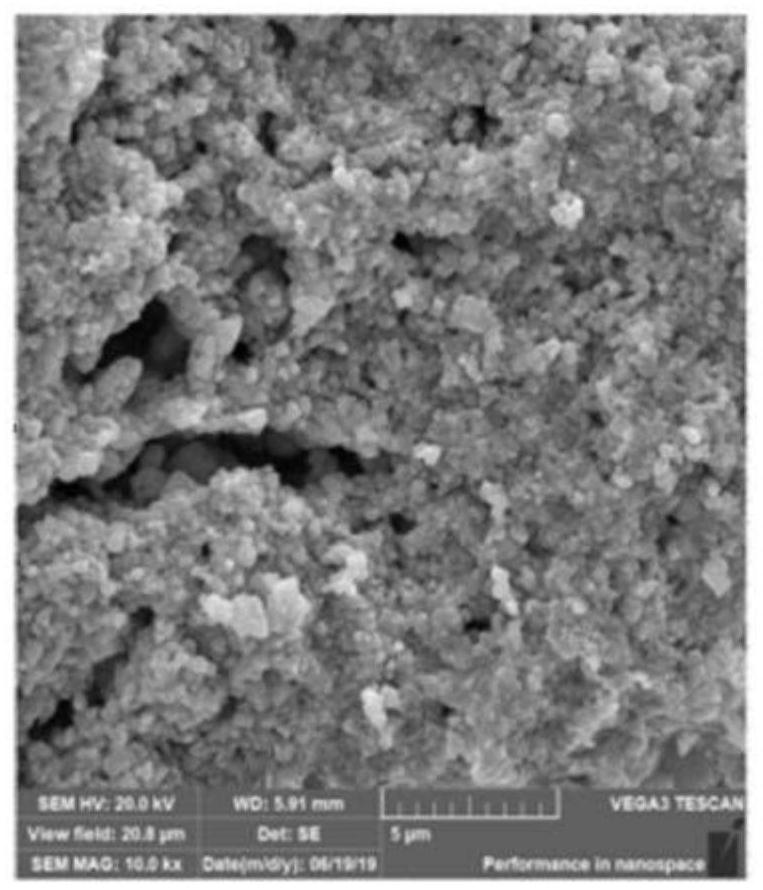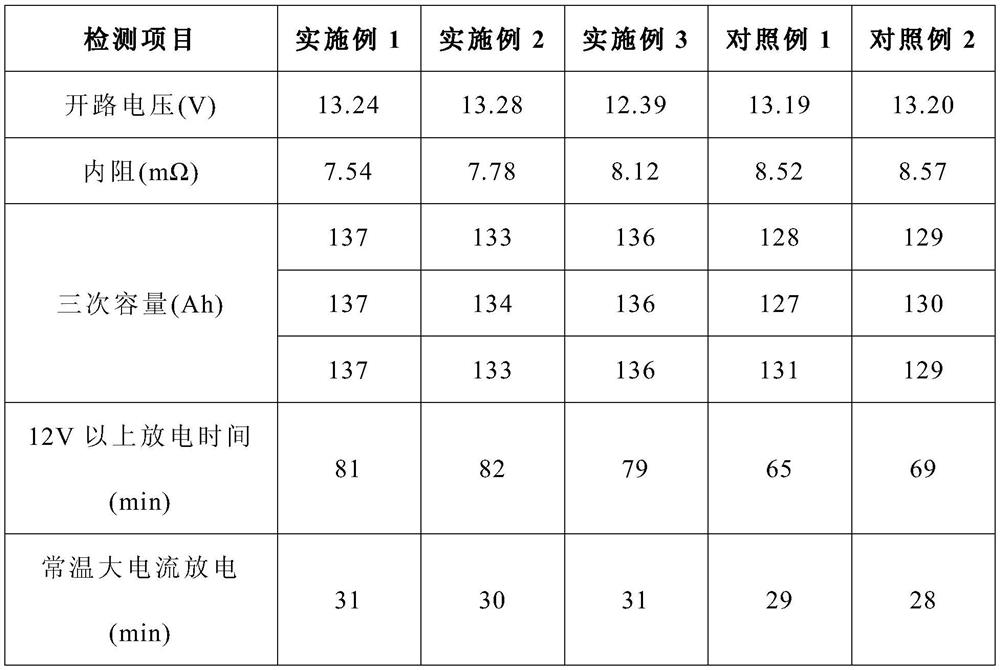Biomacromolecular repair agent for lead-acid battery and preparation method thereof
A biomacromolecule, lead-acid battery technology, applied in the direction of lead-acid battery, secondary battery repair/maintenance, secondary battery, etc., can solve problems such as uneven repair efficiency and success rate, and achieve easy industrial production and distribution The effect of rigorous and scientific formula
- Summary
- Abstract
- Description
- Claims
- Application Information
AI Technical Summary
Problems solved by technology
Method used
Image
Examples
Embodiment 1
[0033] A biomacromolecule restoration agent for lead-acid batteries, comprising the following raw materials in parts by weight: 6 parts of γ-hydroxybutyric acid, 7 parts of acetic acid, 7 parts of γ-PGA, 4 parts of N-acetylgluconic acid, and 6 parts of Lunasin peptide 18 parts of ST peptide, 5 parts of β-hydroxy-α-aminobutyric acid, 7 parts of L-2-amino-3-hydroxypropionic acid, 20 parts of distilled water, and 20 parts of sulfuric acid.
[0034] Its preparation method comprises the following steps:
[0035] S1. Take 6 parts of γ-hydroxybutyric acid and add it to 10 parts of distilled water, stir, and after mixing evenly, add 7 parts of acetic acid and 7 parts of γ-PGA in sequence, and continue stirring for 1.5 hours at room temperature to obtain a mixed solution A;
[0036] S2. Take 4 parts of N-acetylgluconic acid and 6 parts of Lunasin peptide and add them together to 10 parts of distilled water, stir at room temperature for 35 minutes, and obtain the mixed solution B after ...
Embodiment 2
[0039] A biomacromolecule restoration agent for lead-acid batteries, comprising the following raw materials in parts by weight: 3 parts of γ-hydroxybutyric acid, 6 parts of acetic acid, 6 parts of γ-PGA, 3 parts of N-acetylgluconic acid, and 5 parts of Lunasin peptide 24 parts of ST peptide, 9 parts of β-hydroxy-α-aminobutyric acid, 4 parts of L-2-amino-3-hydroxypropionic acid, 20 parts of distilled water, and 20 parts of sulfuric acid.
[0040] Its preparation method comprises the following steps:
[0041] S1. Take 3 parts of γ-hydroxybutyric acid and add it to 10 parts of distilled water, stir, and after mixing evenly, add 6 parts of acetic acid and 6 parts of γ-PGA in sequence, and continue stirring for 1.5 hours at room temperature to obtain a mixed solution A;
[0042] S2. Take 3 parts of N-acetylgluconic acid and 5 parts of Lunasin peptide and add them to 10 parts of distilled water, stir at room temperature for 30 minutes, and obtain the mixed solution B after dispersin...
Embodiment 3
[0045] A biomacromolecule restoration agent for lead-acid batteries, comprising the following raw materials in parts by weight: 4 parts of γ-hydroxybutyric acid, 4 parts of acetic acid, 10 parts of γ-PGA, 3 parts of N-acetylgluconic acid, and 6 parts of Lunasin peptide 20 parts of ST peptide, 6 parts of β-hydroxy-α-aminobutyric acid, 2 parts of L-2-amino-3-hydroxypropionic acid, 20 parts of distilled water, and 25 parts of sulfuric acid.
[0046] Its preparation method comprises the following steps:
[0047] S1. Take 4 parts of γ-hydroxybutyric acid and add it to 10 parts of distilled water, stir. After mixing evenly, add 4 parts of acetic acid and 10 parts of γ-PGA in sequence, and continue stirring for 1.5 hours at room temperature to obtain a mixed solution A;
[0048] S2. Add 3 parts of N-acetylgluconic acid and 6 parts of Lunasin peptide to 10 parts of distilled water, stir at room temperature for 30 minutes, and obtain mixed solution B after dispersing evenly;
[0049] ...
PUM
 Login to View More
Login to View More Abstract
Description
Claims
Application Information
 Login to View More
Login to View More - R&D
- Intellectual Property
- Life Sciences
- Materials
- Tech Scout
- Unparalleled Data Quality
- Higher Quality Content
- 60% Fewer Hallucinations
Browse by: Latest US Patents, China's latest patents, Technical Efficacy Thesaurus, Application Domain, Technology Topic, Popular Technical Reports.
© 2025 PatSnap. All rights reserved.Legal|Privacy policy|Modern Slavery Act Transparency Statement|Sitemap|About US| Contact US: help@patsnap.com



